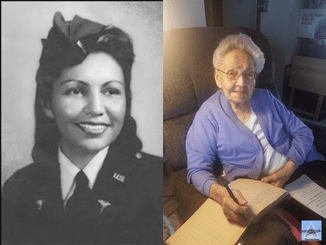
The awful legacy of the V-1 Bomb is something that US Army nurse, Mrs. Marcella LeBeau neé Ryan remembers all too well. Along with TLBP signatories, Les Grafton and Madame Colette Marin-Catherine, this devastating new weapon impacted thousands, marking the terrifying dawn of the intercontinental ballistic missal.
The soft spoken veteran was born 12 October 1919 on the Cheyenne River Indian Reservation in Promise, South Dakota. A member of the Two Kettle Band Cheyenne River Sioux Tribe, her Lakota name, Wignuke Waste Win, means Pretty Rainbow Woman. Her mother is a descendant of Rain in the Face who fought at the Battle of Little Big Horn. Her grandfather, Joseph Four Bear, was a reluctant signatory to the infamous Fort Laramie Treaty of 1868.
Inducted into the National Native American Hall of Fame in Oklahoma City on 6 November 2021, this accomplished centenarian has devoted her life to passing on her rich indigenous heritage to subsequent generations. She is revered by her family who rightly cherish her accomplishments and wisdom as an elder. It is impossible to quantify her profound impact throughout her community.
Enlisting as an Army nurse
LeBeau served with distinction as a US Army nurse during World War II. She graduated in 1942 after a three year program at St. Mary’s School of Nursing in Pierre. Working some time at a hospital in Fort Thompson, she took her first out-of-state job in Pontiac, Michigan.
I was working in the surgical ward in Pontiac, and we kept hearing radio announcements about the need for Army nurses.
LeBeau in Dawes County Journal, 8 October 2018[1]https://www.dawescountyjournal.net/2018/10/a-story-about-marcella-lebeau.html
LeBeau and a friend were recruited by the American Red Cross to become Army nurses who could be deployed within the US or overseas. As brand new 2nd Lieutenants, they hoped to serve together after their enlistment in April 1943. Instead, LeBeau was sent to California for further training while her friend was assigned to Colorado.
Overseas deployment
While temporarily assigned to the psychiatric wards of Torney General Hospital in Palm Springs, new orders were received. She joined the 76th General Hospital Unit in Boston and boarded troop transport USAT George Washington (ID-3018), heading for Liverpool, England.
Receiving initial orientation to the European Theatre Operations, she was assigned to the medical facility at Leominster 100 miles northwest of London.
Assigned to the psychiatric ward, she soon submitted a request to transfer to surgery. It was primarily a routine schedule through May of 1944. Then came June 6, D-Day, and work accelerated at a hectic pace around the clock.
We were called to our duty stations at 2:30 in the morning and we began getting soldiers from D-Day. We were pretty busy after that.
LeBeau in Dawes County Journal, 8 October 2018[4]https://www.dawescountyjournal.net/2018/10/a-story-about-marcella-lebeau.html
Normandy landing
The 76th General Hospital started relocating to France in July 1944 [5]https://www.med-dept.com/articles/ww2-military-hospitals-european-theater-of-operations/. By mid-August LeBeau’s unit was ordered to Southampton to embark for Normandy.
Making a stormy 3-day channel crossing, they finally disembarked via rope ladder down into a landing barge for the final leg. LeBeau recalls a lucky dry exit onto the beach. Others were less fortunate, with barge ramps lowered short of the beach, forcing wet entries onto French soil [6]https://memory.loc.gov/diglib/vhp-stories/loc.natlib.afc2001001.24202/. Landing on Utah Beach near Carentan, much of Normandy had been secured but the area was definitely still a war zone.
In Paris
An advance party of the 108th General Hospital reached Paris on 29 August, following the city’s liberation 4 days earlier. ‘Beaujon Hospital’, a twelve-story building located in Clichy, Paris, housed the 108th GH, representing the first hospital to begin operations in the liberated capital [7]https://www.med-dept.com/unit-histories/108th-general-hospital/.
LeBeau’s unit was temporarily assigned to the 108th GH in Paris before heading for Belgium to join the 76th GH. In Paris she treated Allied casualties as well as German prisoners of war.
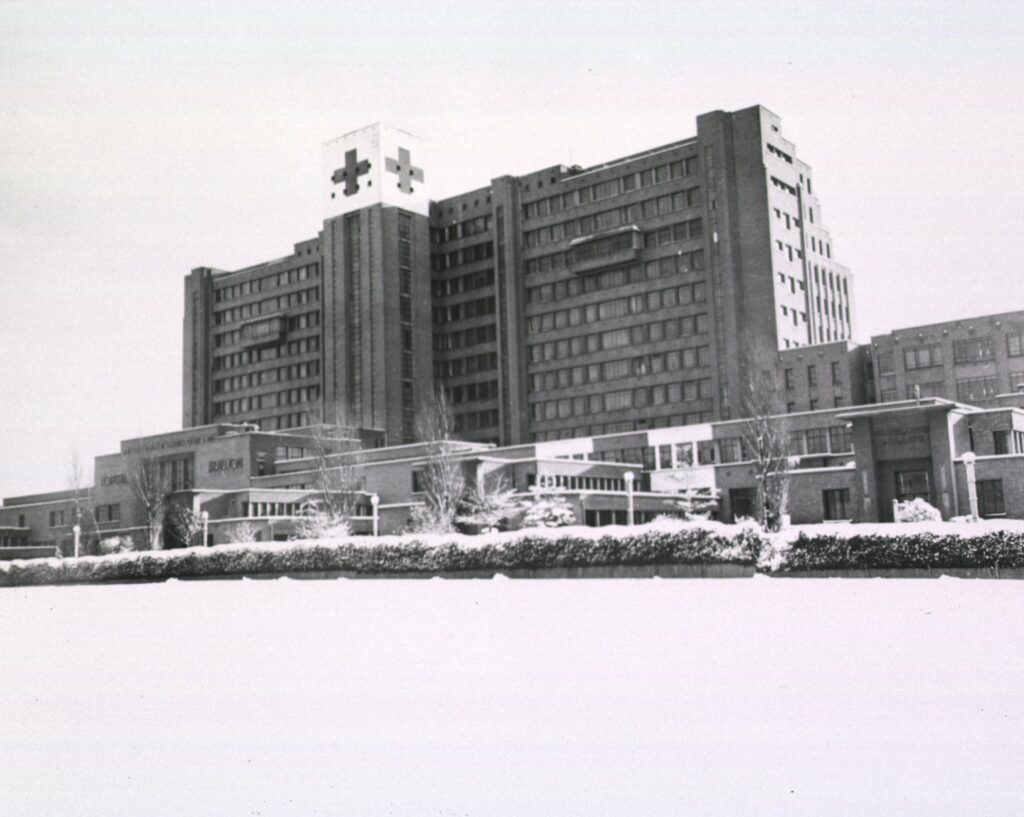
http://resource.nlm.nih.gov/101443118
Battle for the Bulge – Liege, Belgium
In the fall of 1944, the Allied advance secured the Belgian cities of Antwerp and Liege. LeBeau’s 76th GH were ordered northward to the 1000-bed hospital in Liege, Belgium. Here she served in a surgical ward, tending to wounded Allied soldiers from various war zones along the front.
On 16 December 1944, the Germans launched a surprise counter-offensive through the Ardennes forest, intending to prevent use of Antwerp while dividing the four Allied forces. This offensive, recorded in history as The Battle of the Bulge, is regarded as one of the most important battles of the war.
In the direct path of the offensive towards Antwerp was Liege, with 76th GH and LeBeau. Liege also became one of the greatest American supply centers on the Continent [8]https://history.army.mil/books/wwii/7-8/7-8_11.HTM. Only stiff American defense prevented the Germans from reaching the cities of Liege and Spa.
At one point we were told to get packed and be ready for evacuation.
LeBeau in Dawes County Journal, 8 October 2018[9]https://www.dawescountyjournal.net/2018/10/a-story-about-marcella-lebeau.html
On 17 December 1944, LeBeau was a mere 40 kms from a war crime recorded as the Malmedy massacre. Fellow TLBP signatory Harold Billow miraculously escaped death, by playing dead in a snowy field at the Baugnez cross road, after the attempted systematic execution of his entire unit.
The Battle of the Bulge would be one of the bloodiest WWII campaigns for the US Army. With over 89,000 casualties, many were treated in the surgical ward in Liege were LeBeau was posted.
Terror from above
LeBeau will never forget the carnage in Liege, Belgium, where she served during the Battle of the Bulge. From the start of the German offensive on 16 December 1944 to the end of January 1945, Liege was constantly bombed.
In late October 1944, the Germans attacked with V-1 flying bombs at the rate of one an hour. These attacks increased steadily and on 8 January 1945, around 8am, a buzz bomb struck part of the tented hospital. The area was occupied by Military Police preparing to sleep after night duty. The impact caused 45 casualties including some 25 dead.
LeBeau was heading towards the area, having also completed a night shift. Stopped by a colleague, she was advised to avoid the awful carnage and proceed to get some sleep since she would be needed later that night. LeBeau still recalls how surreal the situation was, to just simply go to sleep despite the magnitude of what had happened. Later that night she indeed treated V-1 bombing casualties.
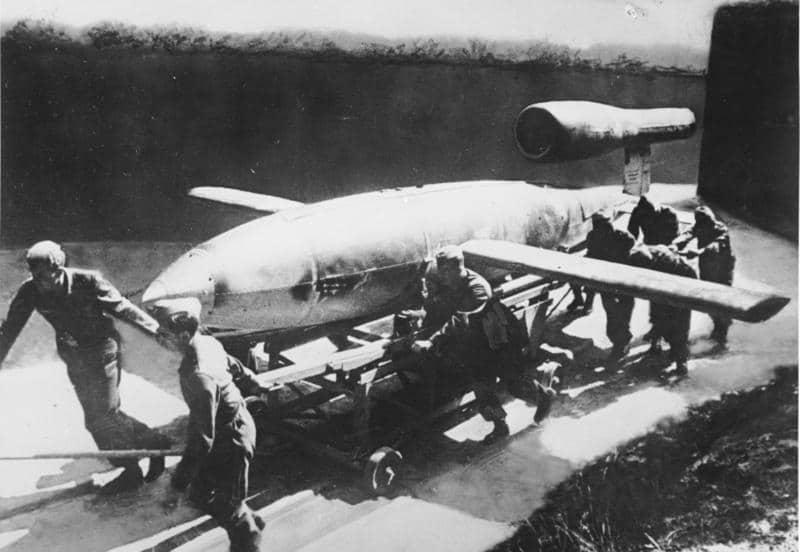
The war’s closing stages
By February 1945, the Allies had recaptured territory lost in the German counter offensive. The war was nearing its end with an unconditional surrender signed in May 1945.
LeBeau was discharged as a 1st Lieutenant in Des Moines, Iowa, in February 1946. Among her awards is the European–African–Middle Eastern Campaign Medal that can be worn carrying no less than 3 Campaign Stars; Northern France, Rhineland and Ardennes-Alsace (Battle of the Bulge).
Immeasurable gravitas and living history
On 20 November 2020, LeBeau became part of the living history of the Log Book Project with her distinguished entry.
The Log Book weighs about a pound; a metric constantly entered at postal and courier services around the world. The true “weight” of the book is calibrated in tonnes however, and entries with the gravitas of those like LeBeau’s are immeasurable. We are absolutely delighted and honored to have Marcella LeBeau’s endorsement within TLBP. This Native American cultural icon and her remarkable legacy of selfless service will inspire generations to come.
It was with great sorrow and sadness we received news of LeBeau’s passing on 21 November 2021.
“Wignuke Waste Win” means “Pretty Rainbow Woman” in her native Lakota language and no rainbow shall ever pass without remembering her legacy and service.
May you rest in perfect peace.
References

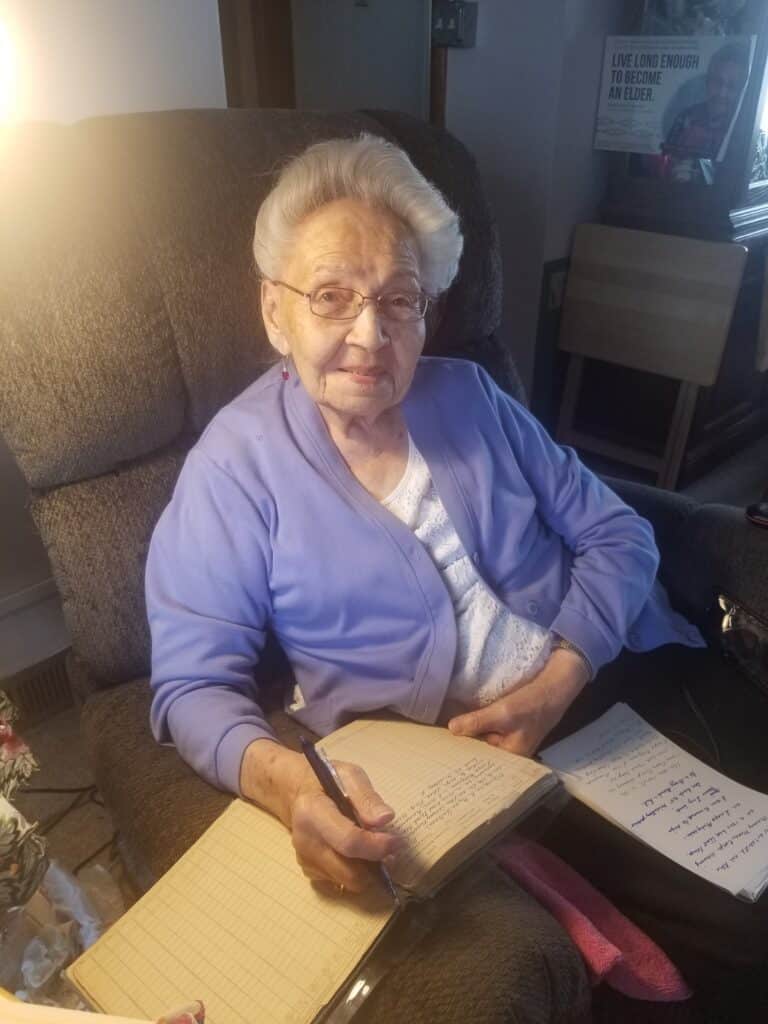
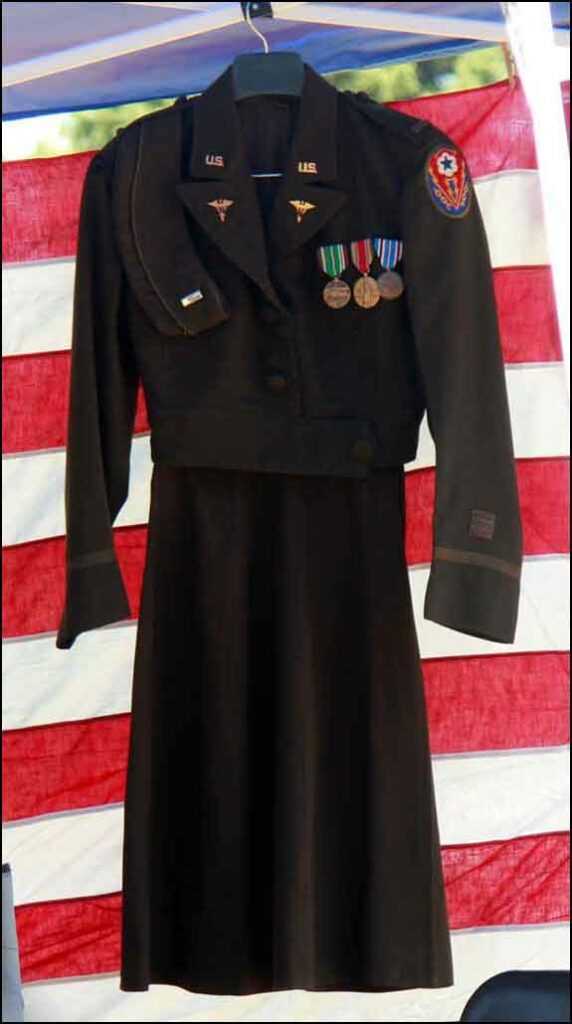
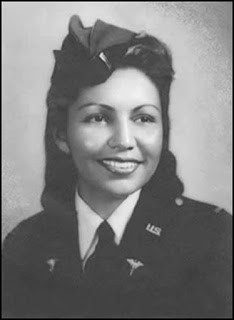
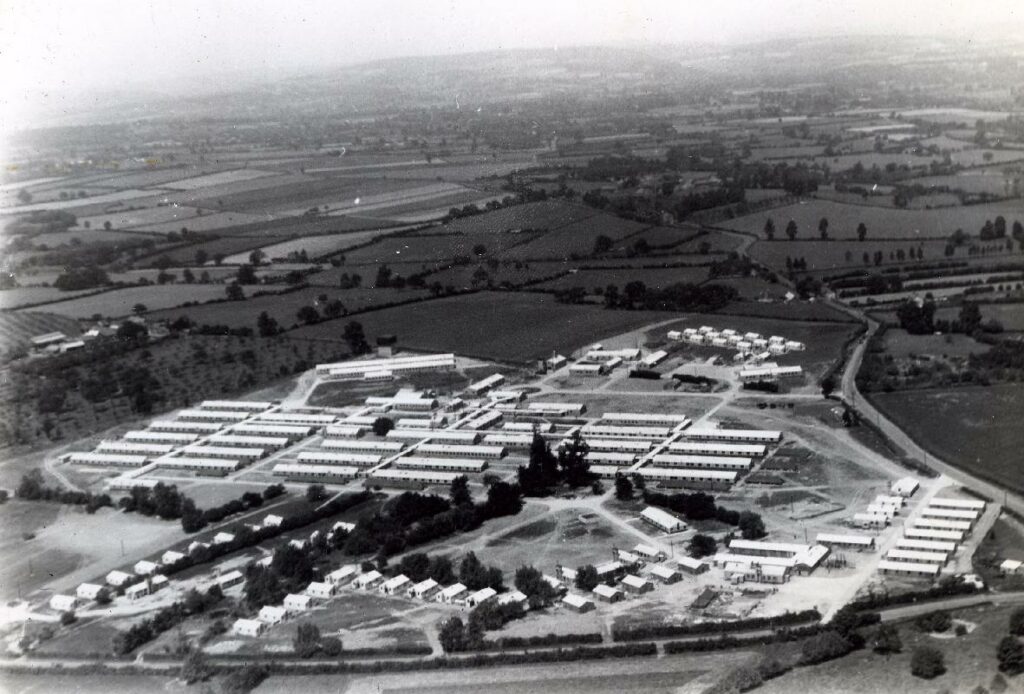
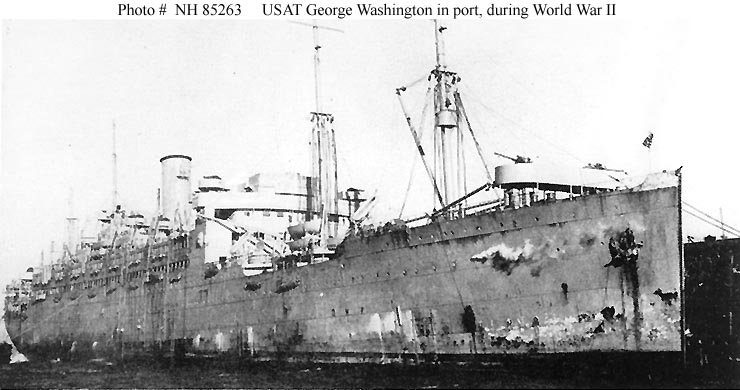

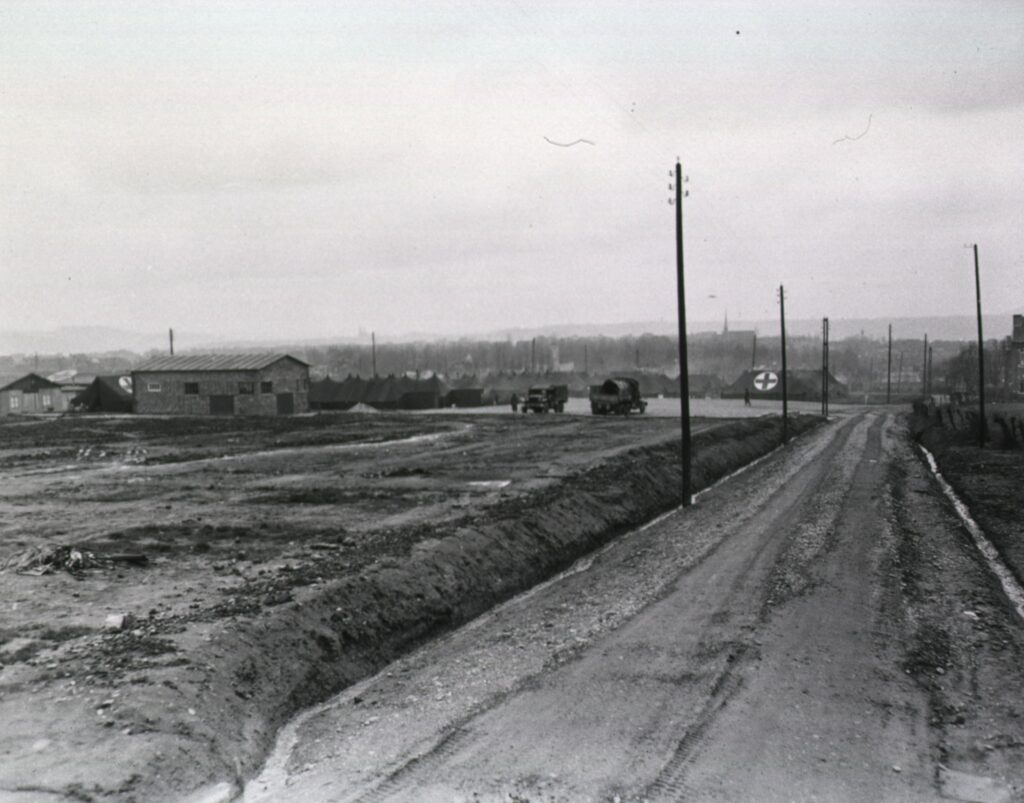


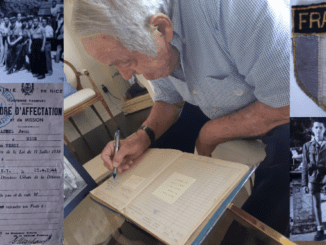
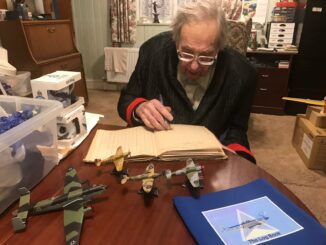
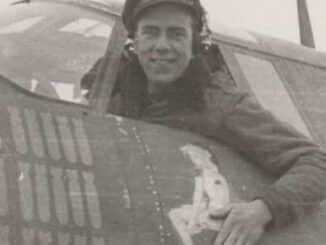
Be the first to comment